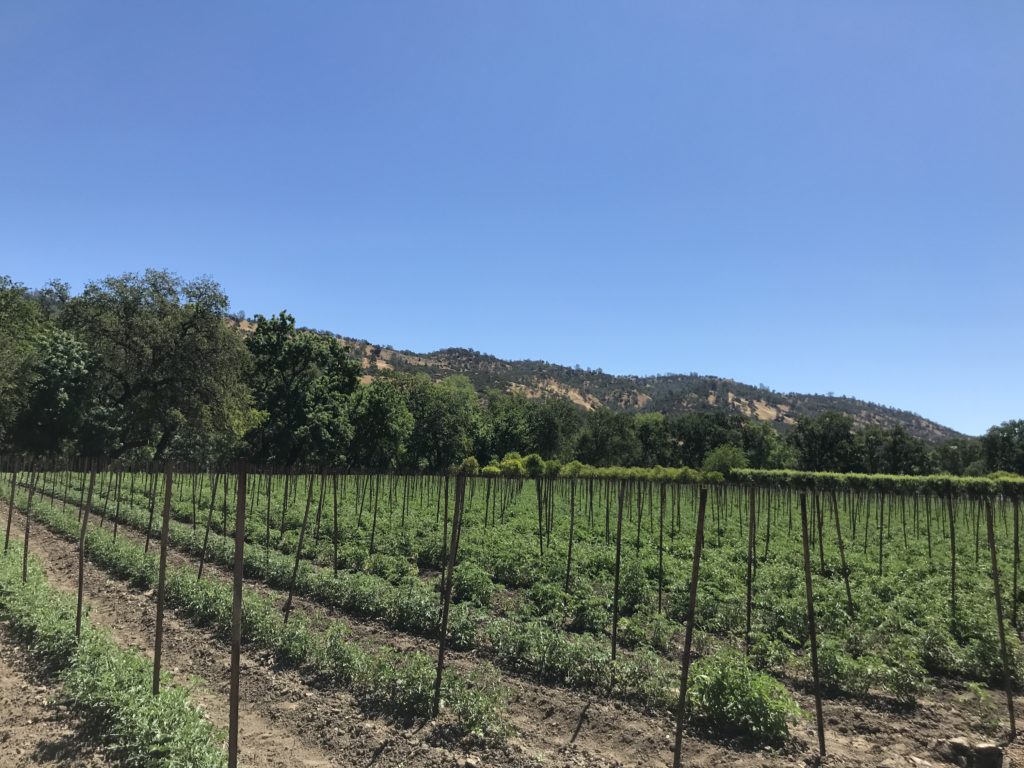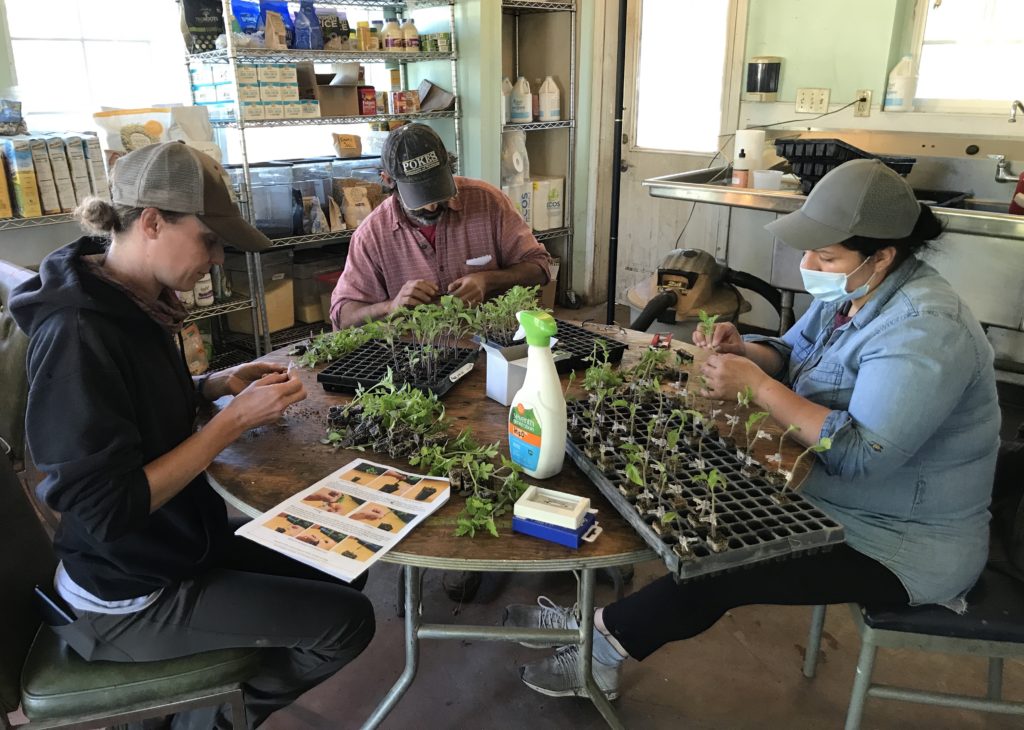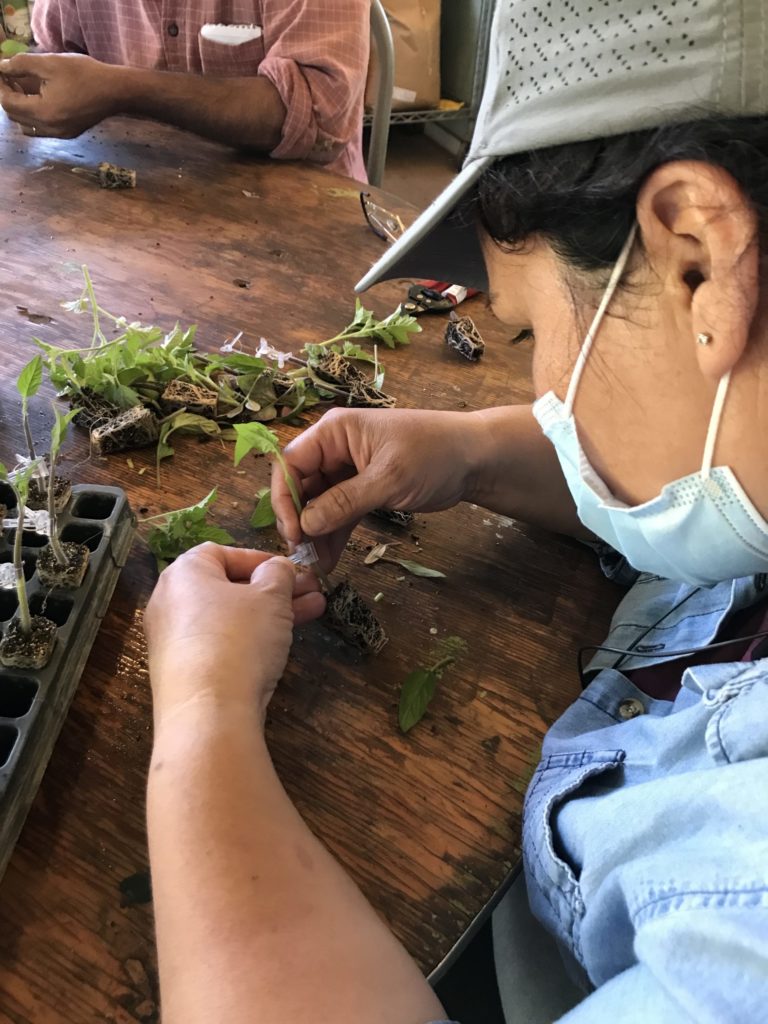
It’s time for a tomato update!
Stakes have gone up in the first tomato field that we transplanted and the plants have been tied. They aren’t directly attached to the stakes; the plants are sandwiched between two strands of twine woven between the stakes. The tomatoes can grow up to a foot a week and the vines need support, so over the next month we’ll be going through about once a week to add additional levels of twine every 12-15 inches. We don’t stake the determinante tomatoes (these are bush-like varieties that stay short, like paste/canning tomatoes) but all indeterminate tomatoes (cherries, heirlooms, etc.) that continue to grow get this treatment.
Last summer was not a good tomato year for us. Here’s a longer explanation, but the short version is that a combination of viruses and a fungi (fusarium wilt) greatly impacted what usually is one of our biggest crops, which is not ideal from a business perspective or for any of us who enjoy eating tomatoes. Fusarium always exists in the soil and different varieties impact different crops; Fusarium oxysporum f. sp. lycopersici harms tomatoes while Fusarium oxysporum f. sp. cubense is what’s threatening the Cavendish banana. If you want to learn more about fusarium, there are many resources out there, but you can start with this one or this one. No one is exactly clear what combination of factors made last year so bad, but it impacted us and other farms in the area.

We don’t want a repeat of last year, so this is what we’re doing as a response:
First, crop rotation, which is one recommendation for dealing with fusarium. Crop rotation is standard for us, but this year we took it to the extreme; all of our tomatoes are on ground where we haven’t grown tomatoes for at least 10 years. Despite this, we’re already seeing plants infected with fusarium, specifically the open-pollinated heirlooms. It’s disappointing and distressing, and we’ve been removing infected plants. However, this “super rotation” did come with some unexpected benefits: the first tomatoes are always planted in Rumsey where it’s usually slightly warmer than Guinda but in the recent frosts, it actually got colder in Rumsey! There are no tomatoes in Rumsey this year, so we avoided that damage.
The main method to manage fusarium’s impact is to grow resistant varieties. There are many hybrids (cherry tomatoes, red slicers, and more) that have resistance to the “race” of fusarium that we’re dealing with and these plants currently appear to be doing well.



And, we’re growing about an acre of grafted tomatoes! We purchased most from a nursery but Andrew, Chica, and Theresa grafted some here (in late March)! The grafted tomatoes combine the top part of an open-pollinated heirloom (the scion) and the bottom part of a hybrid tomato that has fusarium resistance (the rootstock). Both are cut at a deep angle, held together with a grafting clip, then put in a warm, humid environment to heal before moving to the greenhouse and then being transplanted in the field. You’ll never know the difference between eating a tomato from a grafted versus non-grafted plant; the fruit has the characteristics of the scion and doesn’t take on the characteristics of the rootstock, just like all the grafted nut and fruit trees in our area. Why not plant all grafted plants for our open-pollinated varieties? Grafted transplants are expensive (buying a grafted transplant from a nursery costs $1.40 each compared to $0.05 each) and are difficult to do on your own, and they’re more work to get into the field. They needed to be transplanted by hand so that the planting depth is shallow enough that the scion doesn’t make contact with the soil.
The tomato plants have some flowers but we’re still a ways off from harvesting fruit. And we’ve still got more tomatoes to transplant. Stay tuned for future updates!
– Elaine Swiedler, CSA Manager
